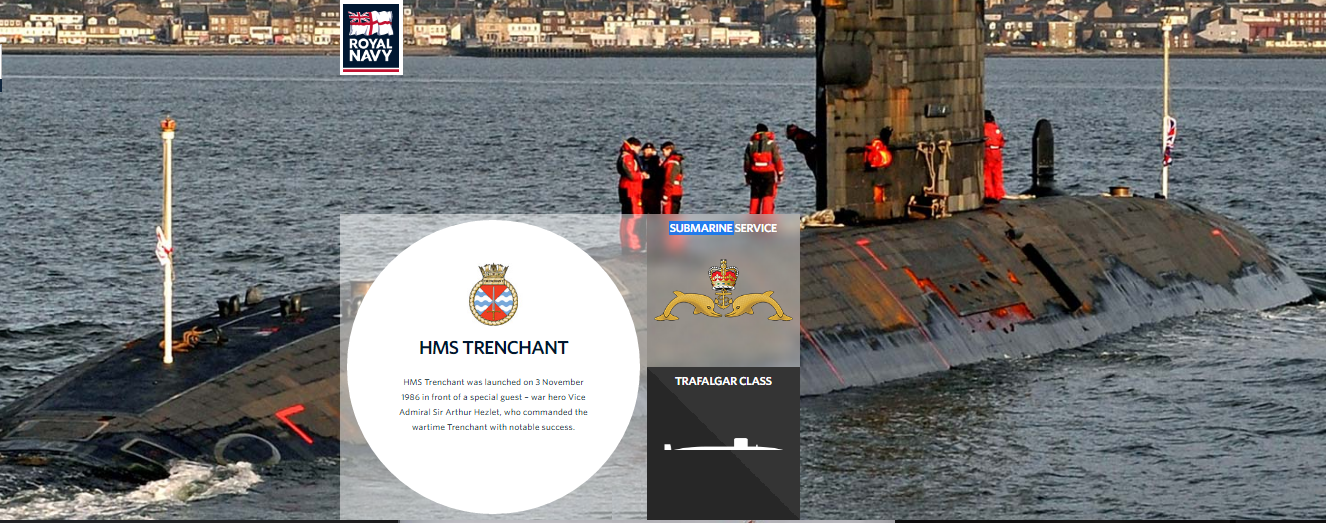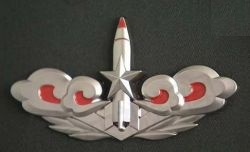
Blog
-
Geiger Readings for Feb 14, 2016
Ambient office = 140 nanosieverts per hourAmbient outside = 105 nanosieverts per hourSoil exposed to rain water = 90 nanosieverts per hourRomaine lettuce from Central Market = 126 nanosieverts per hourTap water = 108 nanosieverts per hourFilter water = 99 nanosieverts per hour -
Nuclear Reactors 457 – Crack In Weld Forces Britain To Dock Half Of Their Nuclear Hunter-Killer Submarines
I have often blogged about problems at nuclear power reactors. I have seldom blogged about problems with the nuclear engines that power submarines and ships. The nuclear engines are very well built and usually function reliably and safely. However, occasionally even these nuclear reactors have problems.
The British navy currently has seven nuclear hunter-killer submarines. There are four of the older Trafalgar class and three of the newer Astute class. There are four more Astute class hunter-killer submarines under construction. These classes of submarines are nuclear powered but they do not carry nuclear missiles. There are four Vanguard class nuclear submarines that carry British nuclear missiles. The hunter-killer class of submarines is intended to defend the British Isles from incursions by enemy submarine and to protect the Vanguard missile submarine.
There are only four Astute class submarines, two of which are being tested and the third is in dock to be repaired about a collision. Due to delays in getting the Astute class submarines constructed and deployed, the life span of the Trafalgar class submarines was extended by ten years.
Recently, the Trenchant, a Trafalgar class submarine, was found to have a crack in one of the pipes around the nuclear reactor. The crack is a fracture on a weld that connects a coolant pipe to the reactor. The fracture is about four inches long. It is classified as a “critical” fault but if it gets any bigger, it would be classified as a “catastrophic” fault. The weld is inside a water tank and is extremely difficult for technicians to access. The tank containing the weld has become progressively more radioactive as time has passed. The fracture may be impossible to repair which would force the navy to retire the submarine.
The fracture was classified as a “generic fault” meaning that other submarines in the Trafalgar class are also at risk for developing the same problem. The three other Trafalgar submarines are the same age as the Trenchant and it is possible that they will also have the same fracture. As a result, all four of the Trafalgar class submarines have been docked. They will remain in dock until they are thoroughly checked for the generic fault cracks in welds.
The hunter-killer submarines are intended to be able to maneuver quickly during combat. If there are flaws that are vulnerable to rapid changes in temperature and pressure such as cracks in pipe welds in a particular submarine, then that submarine would be a lame duck, afraid to move the way it is supposed to in a battle.
It is quite possible that all four of the Trafalgar class submarines will have to be withdrawn from service because they cannot be repaired. The nuclear reactors that power the submarines are designed to never need service during their operational life span. If they break, they cannot be repaired.
With four Trafalgar submarines docked for inspection, two Astute submarines undergoing sea trials and the third Astute submarine being repaired, Britain’s entire hunter-killer fleet is unavailable for deployment. may have to ask the U.S. for help to maintain their submarine defense capability.
HMS Trenchant:
-
Geiger Readings for Feb 13, 2016
Ambient office = 108 nanosieverts per hourAmbient outside = 92 nanosieverts per hourSoil exposed to rain water = 89 nanosieverts per hourOrange bell pepper from Central Market = 91 nanosieverts per hourTap water = 99 nanosieverts per hourFilter water = 84 nanosieverts per hour -
Nuclear News Roundup Feb 12, 2016
Idaho National Laboratory’s nuclear energy innovation program has announced a second round of funding for small businesses interested in developing next-generation nuclear technologies. postregister.com
The Ministry of Electricity is preparing to hold a public rally to announce the details of the establishment of Dabaa nuclear power plant in cooperation with Russia. dailynewsegypt.com
Nuclear quotes. hyperallergic.com
-
Geiger Readings for Feb 12, 2016
Ambient office = 105 nanosieverts per hourAmbient outside = 140 nanosieverts per hourSoil exposed to rain water = 132 nanosieverts per hourRedleaf lettuce from Central Market = 140 nanosieverts per hourTap water = 115 nanosieverts per hourFilter water = 108 nanosieverts per hour -
Nuclear News Roundup Feb 11, 2016
RenewableUK chief says windfarms could offer cheaper prices than rates government agreed with new nuclear power stations. theguardian.com
Britain could need up to 20 more nuclear power stations should the electric car replace the petrol engine. dailymail.co.uk
After listening to experts describe the threat posed by North Korea and its nuclear arsenal, U.S. Rep. Brad Sherman, a California Democrat, paused amid a Capitol Hill hearing earlier this week and made a suggestion. “We ought to have civil defense in this country,” said Sherman during a hearing of the House Foreign Affairs Committee. mcclatchydc.com
-
Geiger Readings for Feb 11, 2016
Ambient office = 69 nanosieverts per hourAmbient outside = 80 nanosieverts per hourSoil exposed to rain water = 73 nanosieverts per hourIceberg lettuce from Central Market = 115 nanosieverts per hourTap water = 74 nanosieverts per hourFilter water = 59 nanosieverts per hourPacific Cod – Caught in USA = 93 nanosieverts per hour -
Nuclear Weapons 251 – China May Consider Nuclear Policy In Light Of Developments In The U.S.
I blogged recently about China’s nuclear policy. China has a stated policy that they will never be the first to use nuclear weapons in a conflict. China decided that a few hundred nuclear warheads were sufficient to act as a deterrent to any hostile nation that might consider staging a nuclear attack against China. Not building and maintaining a huge nuclear arsenal like those of the U.S. and Russia has allowed China to spend its defense funds on building other types of weapons systems. However, discussions in the U.S. about expansion of its nuclear arsenal are prompting some in China to call for a reconsideration of nuclear policy.
In the past decade, the U.S. Department of Defense has recommended that the U.S. develop new tactical nuclear weapons with low yields which could be used on smaller battlefields than current nuclear weapons. Tong Zhao, an associate in the Carnegie Endowment’s Nuclear Policy Program based in Beijing, recently said in an interview “that this more flexible form of weapon could lower the threshold of nuclear use.” Zhao suggested that this move by the U.S. could convince China that the U.S. might contemplate the first use of these new tactical nuclear weapons in a conflict. This possibility may prompt the Chinese to develop their own tactical nuclear weapons and reconsider their prohibition of first-use of nuclear weapons.
The Obama Administration was considering the development and deployment of a massive global network with layers of missile defenses to protect not just the U.S. homeland and U.S. allies, but also U.S. base and troops anywhere in the world. On January 27th, the new U.S. President, Donald Trump, issued an Executive Order to the new U.S. Secretary of Defense, James Mattis, to review U.S. nuclear capability. It has been reported that the new administration is interested in pursuing the previous administration’s global missile network plan.
If the U.S. does actually deploy such a massive global network of missile systems, China may decide that its current nuclear arsenal is not sufficient to prevent annihilation and increase its stock of nuclear warheads. In addition, China may decide that in order for it to retaliate successfully against a nuclear attack, it may have to abandon its policy of not launching a retaliation until enemy missiles actually land on Chinese soil. The new policy would be to launch Chinese missiles on warning that enemy missiles were coming. This increases the danger of mistakes and accidents. The world has already come close to nuclear war because warning systems issued false alerts of an attack.
Zhao said in the interview that he had seen no sign of top Chinese officials discussing or considering such changes to Chinese nuclear policy. However, Zhao did say that low-level analysts, military scholars and media commentators are increasingly suggesting that China needs to enlarge its nuclear arsenal and reconsider its nuclear policy.
Recent developments in the South China Sea have led to China consider the deployment of nuclear-tipped cruise missiles on Chinese nuclear submarines carrying out regular patrols in the South China Sea. This would move nuclear weapons out of the tight control of Beijing and into the hands of individual submarine captains. With belligerent statements from the incoming Trump Administration about blocking Chinese access to their artificial islands in the South China Sea, China’s nuclear policy may be changing soon.
Peoples Liberation Army Rocket Forces Insignia:
-
Nuclear News Roundup Feb 10, 2016
Spain’s nuclear safety regulator has given conditional approval for the restart and continued operation of the Garoña nuclear power plant, which has been offline for the past four years. Operator Nuclenor would be required to make a number of safety upgrades. world-nuclear-news.org
The nuclear industry’s top lobbyist told Wall Street analysts Thursday that the industry has reached a “tipping point” in gaining Washington’s attention to keep nuclear power plants from closing. washingtonexaminer.com





